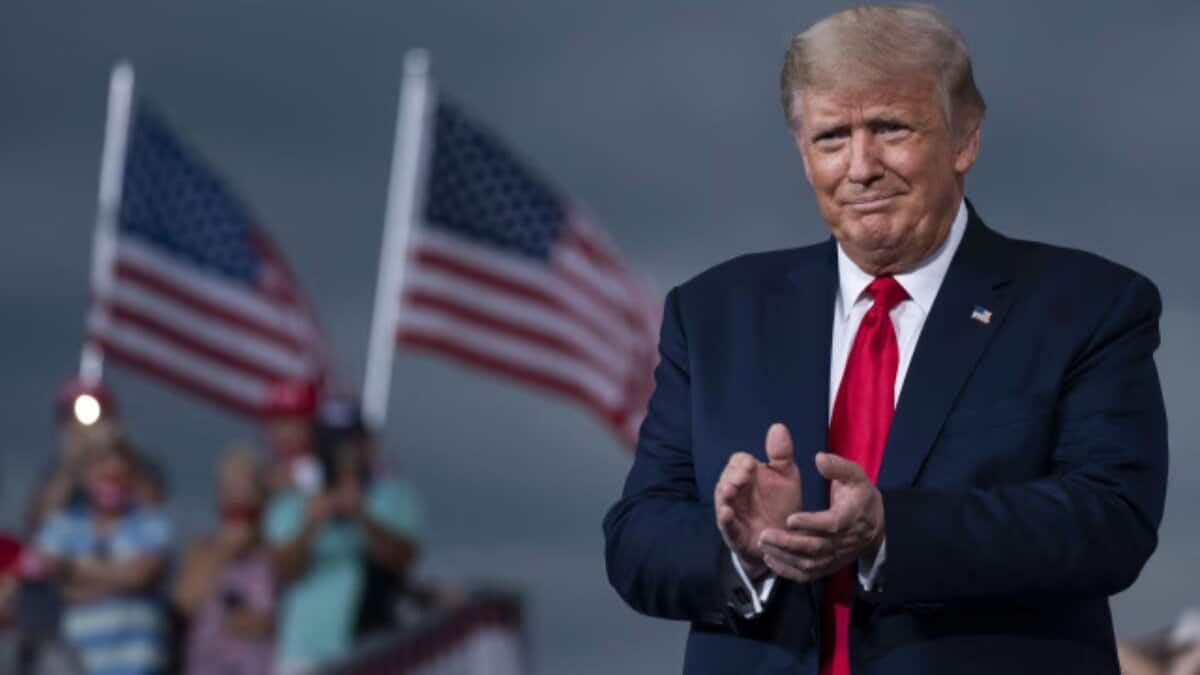
India’s hopes for reduced export tariffs to the United States were dashed on Wednesday when the Trump administration announced a 25% levy and an unspecified penalty for buying arms and crude oil from Russia. The Modi government is responding cautiously, as the full impact of these penalties remains unclear.
Concerns have been raised about the impact of India’s exports on the economy and stock market. On July 30, Trump announced a 25% tariff on imports from India, stating, “While India is our friend, we have done little business with them because their tariffs are among the highest globally, and they have challenging non-tariff trade barriers.”
Experts warn that the 25% tariffs could reduce India’s growth in 2025-26, potentially reducing it by up to 40 basis points. Additional penalties might further damage the economic outlook.
The statistics show that in 2025, India sold $10.5 billion in pharmaceuticals and $14.6 billion in smartphones to the United States. Trump did not include these critical sectors in the new tariffs starting on August 1.
India has trade surplus with US
In that same year, India had a trade surplus of $41 billion with the United States. This surplus was $35.32 billion in 2023-24 and $27.7 billion in 2023.
Trump’s surprise announcement has drawn strong reactions from opposition leaders. The Congress party stated on X, “The country is now bearing the costs of Modi’s ‘friendship’.” Critics are questioning Trump’s support for high tariffs, despite his praise for Modi as a friend.
The reasons were evident: the influence of Russia, trade with India, and India’s firm stance during trade negotiations. This aggressive
behaviour also comes from geopolitical frustration.
Media reports suggest that Trump is frustrated with the restrictions in Indian markets, which have influenced his decision.
The US has long complained about high tariffs on American goods. Although Trump initially saw India as a key trade priority, slow progress has led to frustration in Washington. New Delhi’s cautious approach has resulted in only limited concessions.
US complains of high tariffs
This move aims to pressure New Delhi into meeting US demands, especially after the US secured favourable trade deals with major partners like Japan, the UK, and the EU, just two days before the timeline.
India’s top exports include smartphones, pharmaceuticals, gems, textiles, industrial machinery, jewellery, and seafood—all of which are now under threat.
Trump unhappy over Moscow-New Delhi ties
In the 2024-25 fiscal year, the United States was India’s largest trading partner, with bilateral trade reaching USD 186 billion. The US accounted for 18% of India’s exports and 6.22% of its imports. Tariff changes could significantly affect both economies.
Trump commented on social media, “It’s about India’s relationship with Russia,” stating, “They can drag their weak economies down together. We do very little business with India due to its high tariffs, and neither does the USA. Let’s keep it that way.”
New Delhi does not have many options. They are: deeper diplomatic engagement, looking for new trade partners, and leveraging the economy.
The Modi government decided to source goods from various countries, including Russia, to protect national interests and stabilise the Indian economy.
Trump bullying India
Trump is open to negotiating with India but has imposed a trade penalty linked to its BRICS membership. Back-channel talks are underway, and experts believe solutions to open the agriculture and dairy sectors could emerge.
New Delhi is trying to manage the situation. Commerce and Industry Minister Piyush Goyal told Parliament that the government will take action to support farmers, workers, and small business owners. He is open to discussions about these issues.
Not everything is black and white. Estimates from ICRA, Nomura, and ANZ suggest that the GDP impact will be modest, as India exports about $87 billion in goods to the US annually, accounting for only 2 to 3% of its total GDP.
Trump commended reports that India might stop buying Russian oil as “a good step” amid US pressure. Indian officials clarified that Indian oil companies continue to import Russian oil due to pricing and logistics. Halting these imports could endanger India’s energy security and lead to wider geopolitical consequences.
Delhi hopeful of better ties with Moscow
New Delhi acknowledges changes in its relationship with Russia but remains confident that the partnership will continue to grow. Despite the challenges, there is some hope on the horizon as a US delegation is set to visit India on August 25 for the next round of negotiations regarding the proposed bilateral trade agreement between the two countries. The Trump administration is seeking deeper market access.
The Modi government is currently grappling with a 25% tariff and exploring ways to overcome this obstacle. As New Delhi initiates collaborative efforts across various ministries to secure trade concessions, the upcoming key negotiations scheduled for later this month take on heightened urgency and significance.
Trump is a businessman who understands how to negotiate. It will be interesting to see how New Delhi handles the pressure from its administration and works to lower tariffs. It is a question of how much to give and how much to take.




